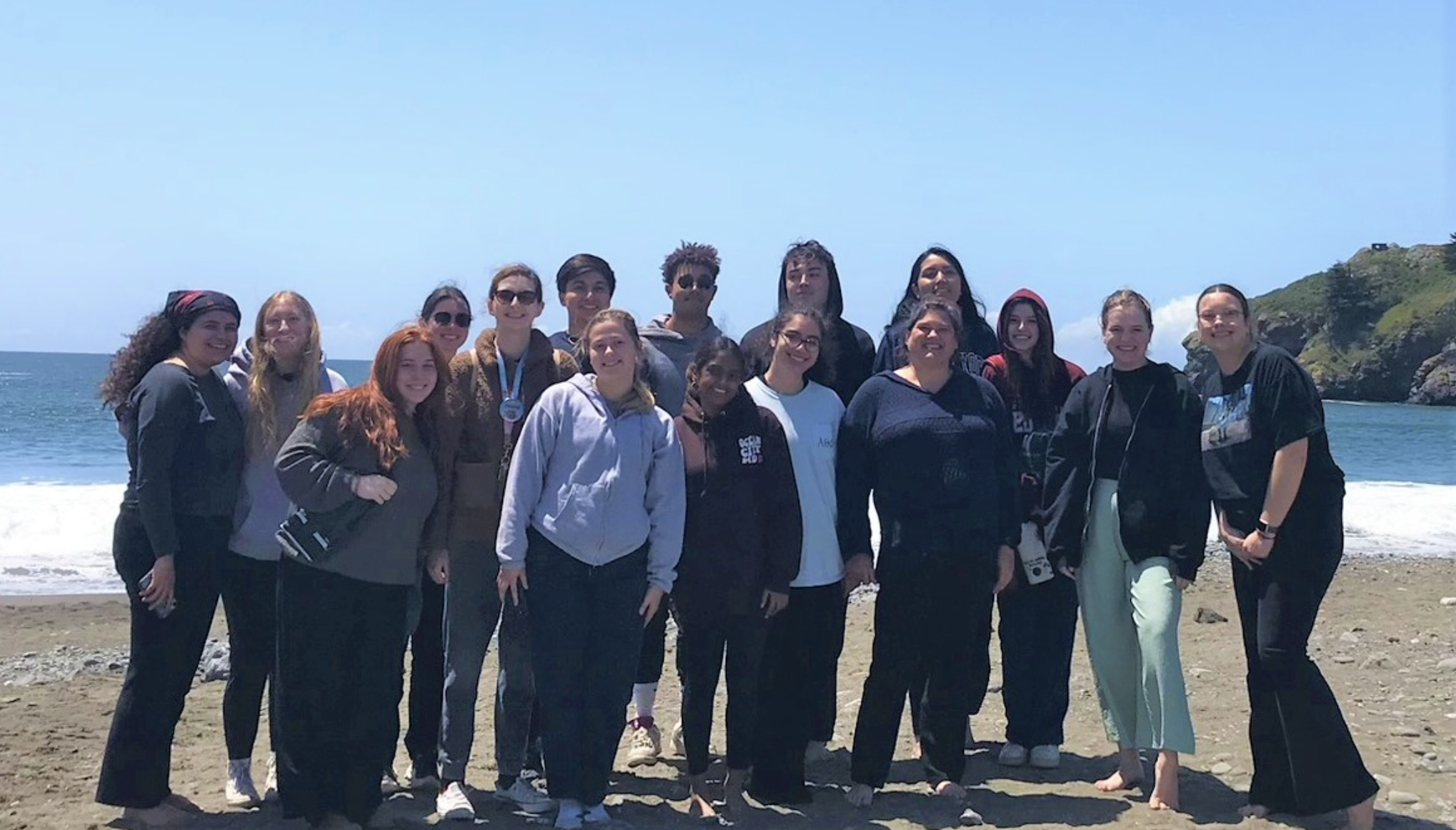Katharina Napoletano '24

The calming sound of a Tibetan singing bowl rings throughout the room. There is a faint aroma of incense as you sit on a plush pillow counting your breaths. Deep inhale and exhale.
Meditation has been practiced for centuries and across multiple cultures. In the May Term course, “The Neuroscience of Meditation,” Biology Professor Lisa Olson and her students investigate the effects of meditation on both the mind and body. Students study research from scientists and scholars and conduct their own research on themselves and their peers by trying various meditative techniques and conducting laboratory experiments to assess the effects of meditation.
The meditation course is one of many unique to the University’s May Term — a distinct, month-long intensive course that enables students to enroll in riveting curriculum typically not offered in semester courses. May Term courses correlate to Fall and Spring terms while providing students opportunities for intensive learning within their major through serving the community, conducting research, or traveling.

Students participating in Zazen- Buddhist sitting meditation.
Crystal Raghunanan ‘24, a double major in psychology and music, said she “joined Neuroscience of Meditation because, as a psychology major, the connection was intriguing to me, and I wanted to use it to help others in the future,” and receive help with her own performance anxiety. She believes the course enabled the discovery of a stronger connection to not only herself but to others and has changed her outlook on managing anxiety and stress. Her favorite form of meditation from class was mindfulness meditation, where breaths are counted to relax and calm the mind.
Olson, who has taught the course since 2012, thinks that the structure of May Term enables deeper engagement with the material and allows a four-day field trip to Marin. This year, students visited a Buddhist temple; toured a lab near Marin that studies parapsychological phenomena — the study of investigating events that cannot be explained by natural law like clairvoyance or psychokinesis — hiked five miles in contemplative silence; and were taught various forms of meditation by faculty and staff in the Graduate School of Theology.
Angela Marie Fairman ‘24, a double major in business administration and media visual culture studies and minor in studio art, said, “Going on a field trip during May Term to immerse myself in this experience really made my time more enjoyable. I was able to see what it is like to experience other practices.” She recalled a unique form of candle meditation during class, where participants stared at a singular lit candle in a dark room for 15 minutes.

Olson said a typical class begins by learning a new form of meditation and then conducting an experiment. Meditation exercises include “comparing whether meditating with a focus on the breath reduces one's blood pressure more than watching TikTok videos; whether a meditation focused on calming the nervous system reduces microscopic levels of sweat; if a compassion-focused meditation impacts a stress chemical secreted in saliva; whether levels of mindfulness are correlated to performance on an attention test,” she explained. In addition to learning how to analyze their data statistically or graphically, the students keep a meditation log throughout the term.
“I really enjoy getting to read their meditation logs, as they describe how they incorporate meditation and mindfulness into their lives,” Olson said. “I think it is quite powerful for anyone to learn that they can observe their thoughts and emotions from a bit of a distance, and that meditation is not about stopping all your thoughts but instead about noticing them,” she said.
“I hope that their new skills in scientific analysis will be empowering in their future, whether evaluating claims in the news media about a medical intervention, considering the impacts of climate change, or making decisions about their own health.”
To learn more about May Term at the U of R click this link. To learn more about the Meditation Room click this link.
